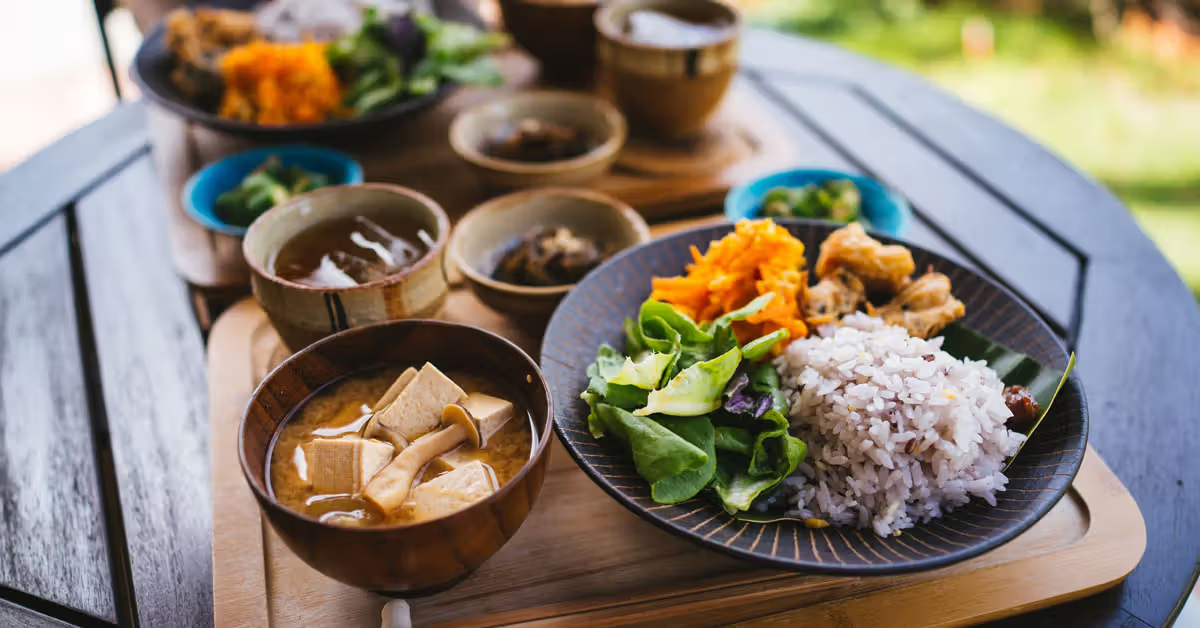Did you ever notice how there are certain folks who seem to age with energy, with vitality, even with a twinkle in their eyes? If you heard rumors of the Okinawa diet, you’re not dreaming. Okinawa is an archipelago south of Japan, and within it live some of the world’s oldest and longest-living individuals; their traditional diet is a big part of that equation.
The Okinawa diet is not just a menu of foods—it’s a way of life that regards food as medicine. Historically, it’s low in fat and calories but high in carbohydrates, with a heavy emphasis on legumes, vegetables, and soy. Fish and pork occasionally appear but in limited quantities, and dairy barely appears at all. As Craig Willcox, a gerontology professor at Okinawa International University, describes, it’s “low in calorie density and high in nutrient density and fiber,” full of phytonutrients and antioxidants that soothe inflammation at the cellular level. Because chronic inflammation underlies so many age-related illnesses—such as heart disease, stroke, diabetes, and cancer—this type of diet provides a natural defense.
Sweet potatoes, rather than rice, are the real staple of the Okinawan table. Purple and orange types are particularly well-loved, full of fiber, vitamins, and antioxidants, and will not raise blood sugar. The meals are supplemented with leafy greens, seaweed, bitter melon, mushrooms, bamboo shoots, carrots, and cabbage. Soy foods such as tofu and miso soup are consumed daily, providing plant-based protein and anti-inflammatory properties. Fish and pork are consumed in moderation, used as flavorings rather than as the main courses.
Flavor derives from turmeric, ginger, garlic, and bonito flakes, each of which provides health benefits as well. Jasmine tea is a popular beverage, while green tea is consumed all day for its antioxidant action. Even the occasional sake is included in the culture, though always in small quantities.
What is so effective about this method of eating is that it promotes longevity and quality of life. The foods contain antioxidants that shield cells and retard the aging process. Sweet potatoes, seaweed, and soy contain plant substances that lower inflammation and reduce the risk of chronic diseases. Individuals in Okinawa have been found to have incredibly low rates of heart disease, cancer, and diabetes, according to studies. The diet also keeps blood sugar stable due to its low glycemic load, and the fiber content promotes intestinal health. Fermented foods such as miso and pickled vegetables add probiotics, and fish and seaweed omega-3s fortify both heart and brain.
But the Okinawa diet is not only about living longer—it’s about living well. Its adherents tend to have lower blood pressure, better cholesterol levels, and more robust immune systems. Tofu, greens, and other calcium-rich foods support bone strength, while fiber helps with weight management. A key principle, hara hachi bu—eating until you’re 80 percent full—encourages mindfulness and helps prevent overeating. Research also links the diet to better brain health, with foods like turmeric, soy, seaweed, and fatty fish showing potential to protect against cognitive decline.
The diet is not alone, however. Okinawan culture integrates food into a broader lifestyle of daily activity, outdoor exercise, and close community bonds. The meal is consumed slowly, lingered over, and often shared with others. This balance of nutrition, activity, and social interaction is as significant as what’s placed upon the table.
Of course, no diet is perfect. The Okinawa diet can feel restrictive, especially if you’re used to eating more animal products, dairy, nuts, or a wide variety of fruits. Some versions are higher in sodium due to soy sauce, miso, and salted fish, which could be a concern for those with high blood pressure. And because animal products are limited, it’s important to pay attention to nutrients like vitamin B12, calcium, and omega-3s.
The good news is, you don’t need to relocate to Japan to adopt this style of eating. The central concepts—plant-centric, whole and unprocessed foods, moderate amounts, and food as medicine—can be practiced anywhere. You can substitute in local veggies, rely on whole grains, and seek out plant-based proteins that are compatible with your culture and way of life. Add that to conscious eating and consistent movement, and you’re living the essence of Okinawa wherever you are.
Ultimately, the Okinawa diet is far more than a meal plan. It’s a philosophy for living with energy and harmony, for feeding not only the body but also the mind and spirit. It’s about eating in a way that supports you day after day and perhaps even cracking the code on a few of the secrets to a long, happy life.
